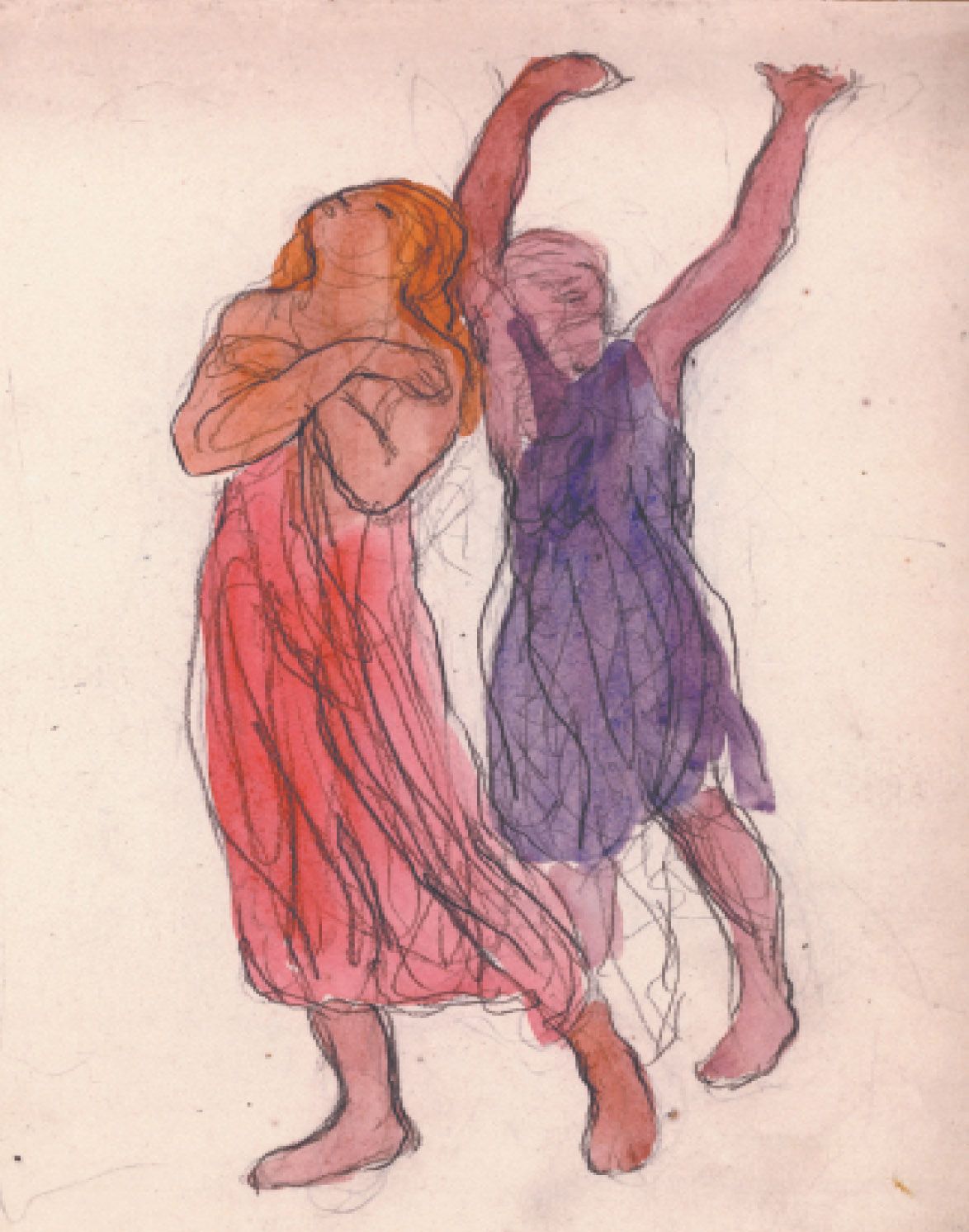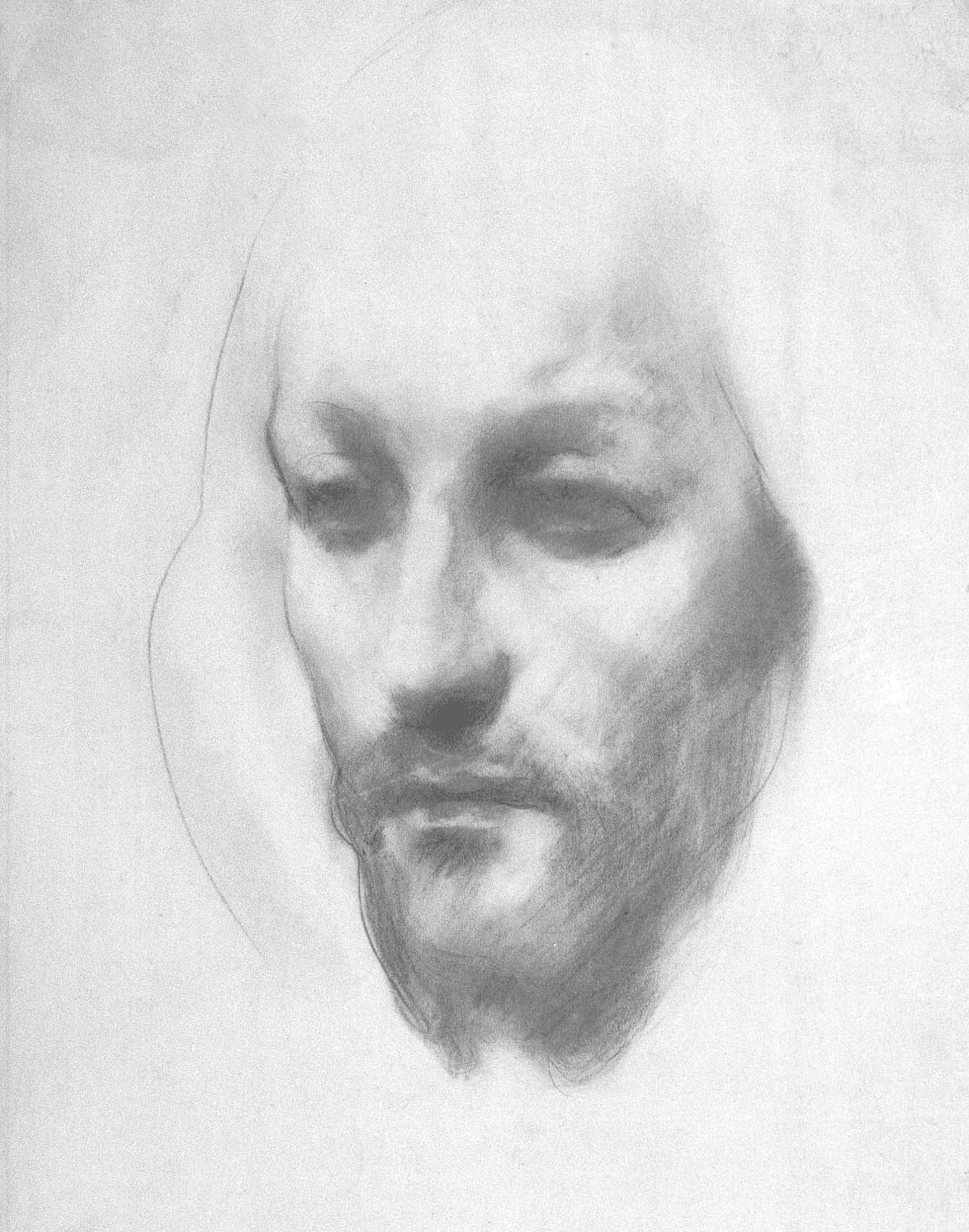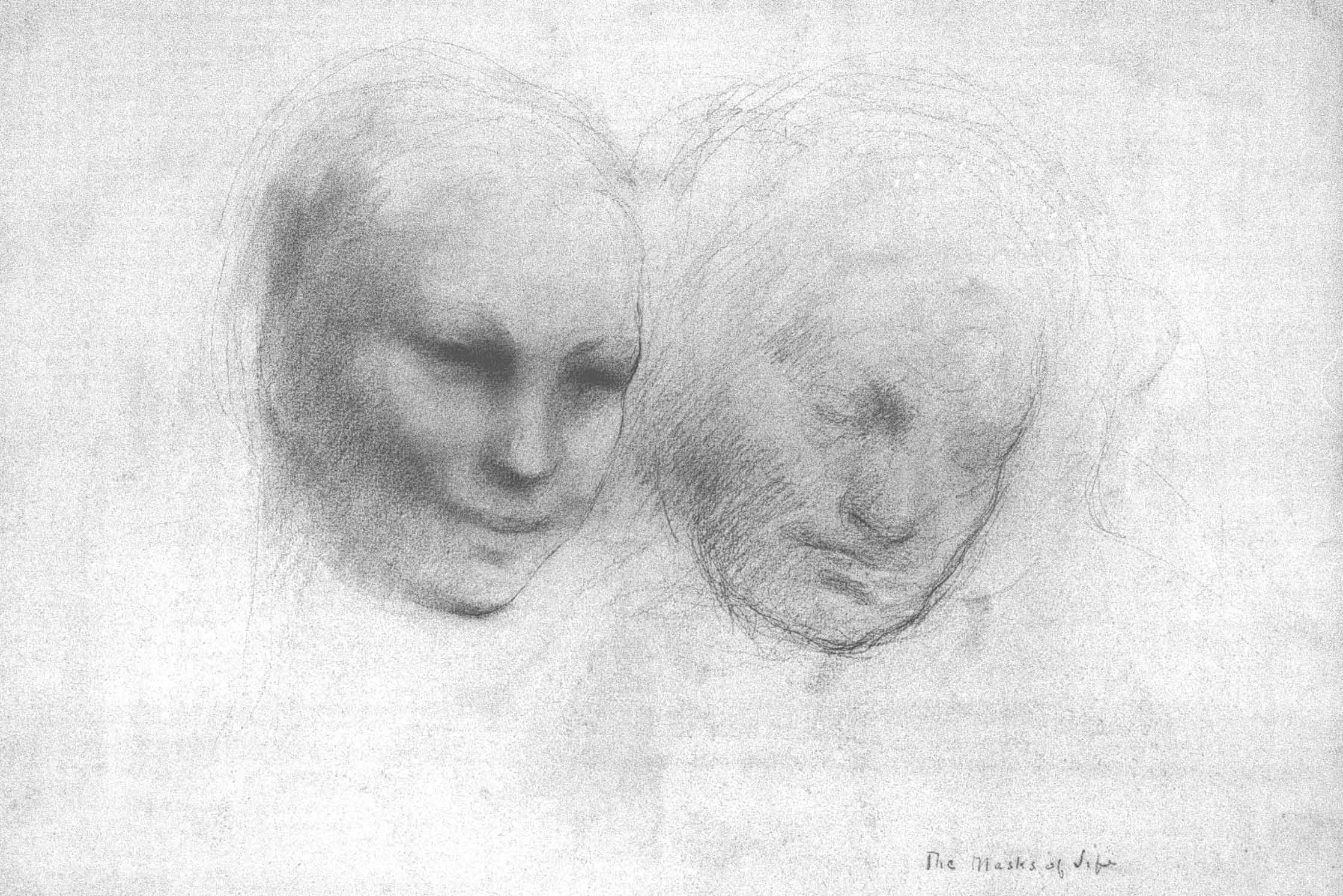Amakin - Stories in Sketches
Safeya Binzagr. Studies for Roshan in al-Balad, Jeddah, 1978 Pencil drawing 23 × 19 cm. Courtesy of Safeya Binzagr
In choosing the works for Amakin, I was strongly drawn to artists across the generations who sketch and draw. In an age when so much can be done digitally, when instead of that special skill in which hand and eye combine, now even well known artists create paintings on their IPads. Safeya Binzagr learned to draw in Cairo where she spent her childhood. From perspective to still life she learned the rules and about color.
It was at St Martin’s School of Art in London in 1978 that she became fascinated by printmaking, and with these new found techniques, she learned how to turn a simple sketch of her old house in Harat al-Sham in al-Balad, Jeddah, or the famous wooden Rawashin so characteristic of the old city, into an etching or an aquatint. That passion for drawing has never left her and her rapid pencil or ink sketches appear on the backs of boarding passes or hotel notepads.
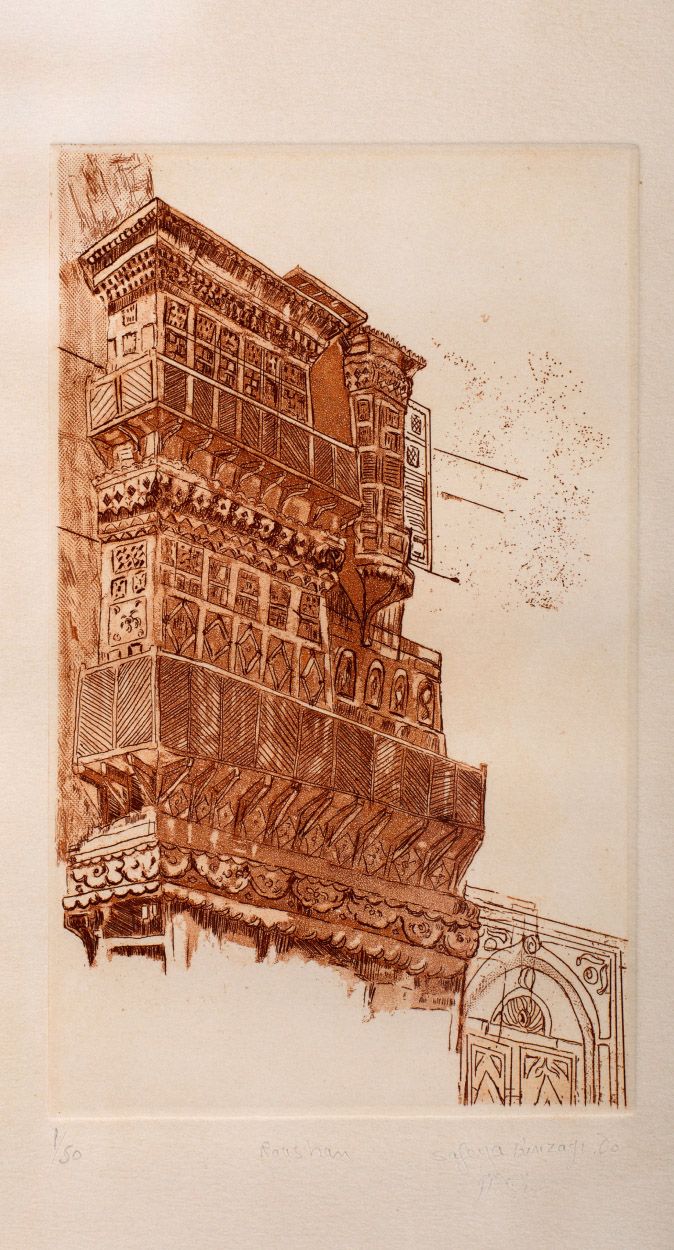
Safeya Binzagr. Studies for Roshan in al-Balad, Jeddah, 1978.
Etching numbered 30/30 28 × 19 cm.
Courtesy of Safeya Binzagr
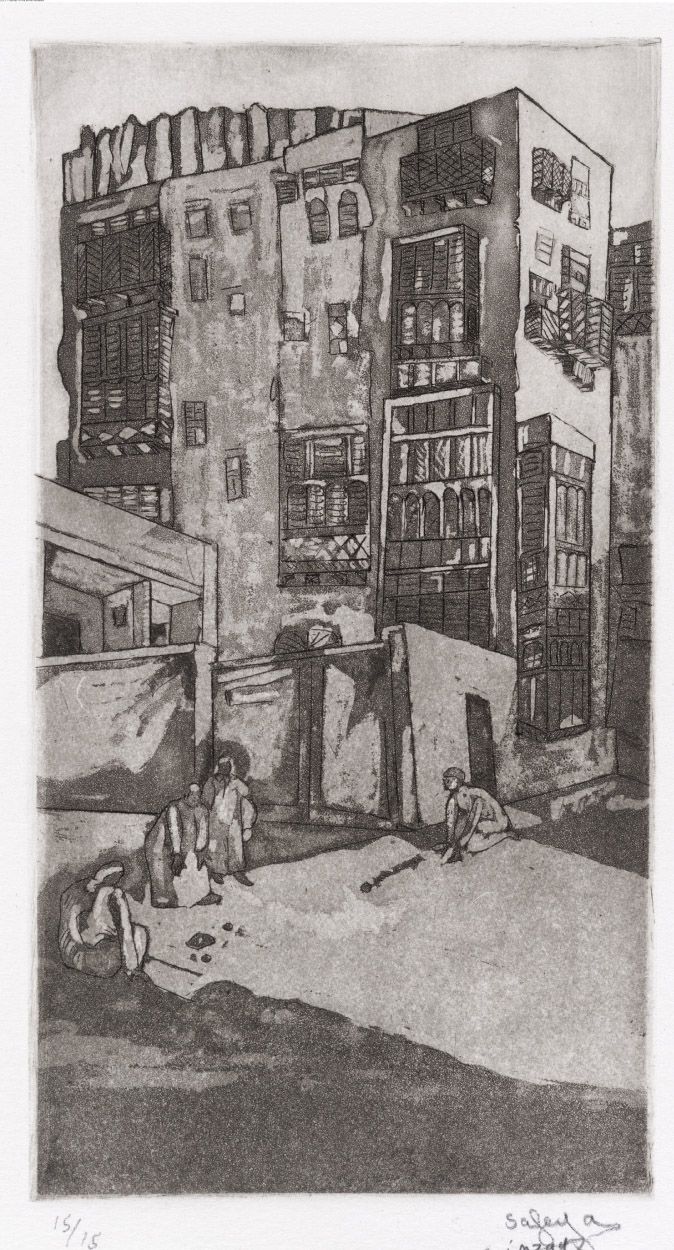
Safeya Binzagr. The Binzagr family house in Harat al-Sham, al-Balad, Jeddah, 1976 Etching numbered 12/15 36 × 26 cm.
Courtesy Safeya Binzagr
There is an informality about works on paper and Abdulhalim Radwi’s small delicate drawings in inks and watercolor, and his experiments in printmaking, contrast with the large oil paintings for which he is much better known.
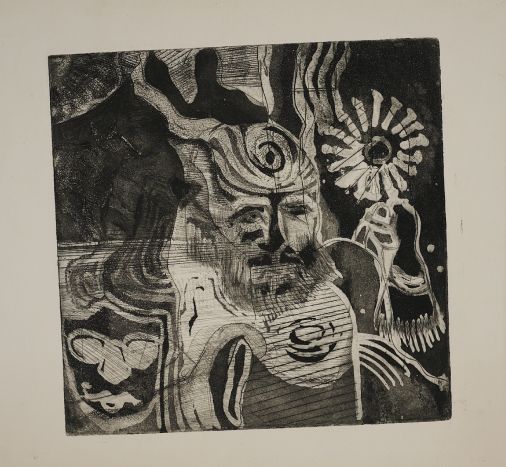
Abdulhalim Radwi. Untitled prints. Mythological scenes (undated).
Courtesy of the Estate of Abdulhalim Radwi
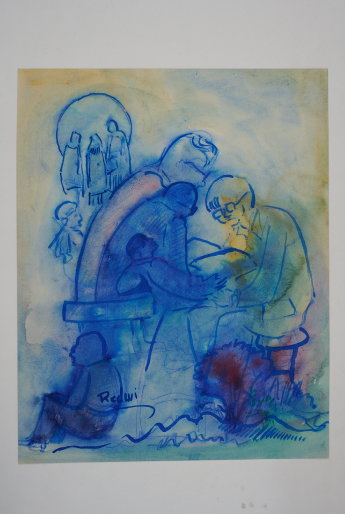
Abdulhalim Radwi. A group of figures (undated) Watercolor on paper Signed in Latin script. 42 × 33 cm.
Courtesy of the Estate of Abdulhalim Radwi

Abdulhalim Radwi. Untitled drawings. Courtesy the Estate of Abdulhalim Radwi

Abdulhalim Radwi. Untitled prints. Mythological scenes (undated).
Courtesy the Estate of Abdulhalim Radwi
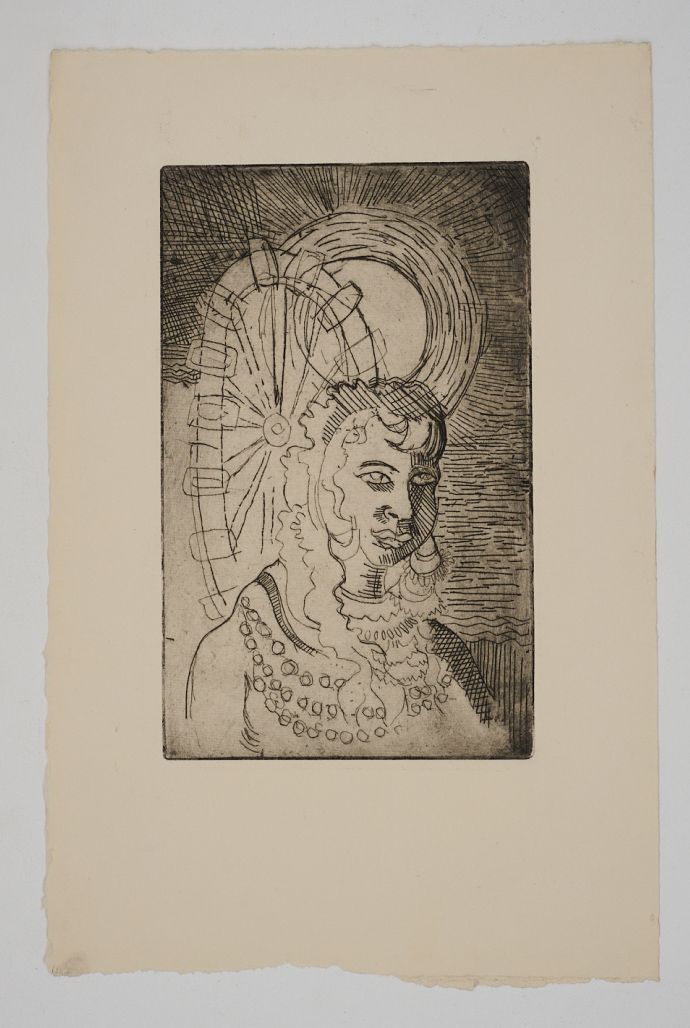
Abdulhalim Radwi. Untitled prints. Mythological scenes (undated).
Courtesy the Estate of Abdulhalim Radwi

Abdulhalim Radwi. Untitled prints. Mythological scenes (undated).
Courtesy the Estate of Abdulhalim Radwi

Abdulhalim Radwi. Untitled drawings. Courtesy the Estate of Abdulhalim Radwi
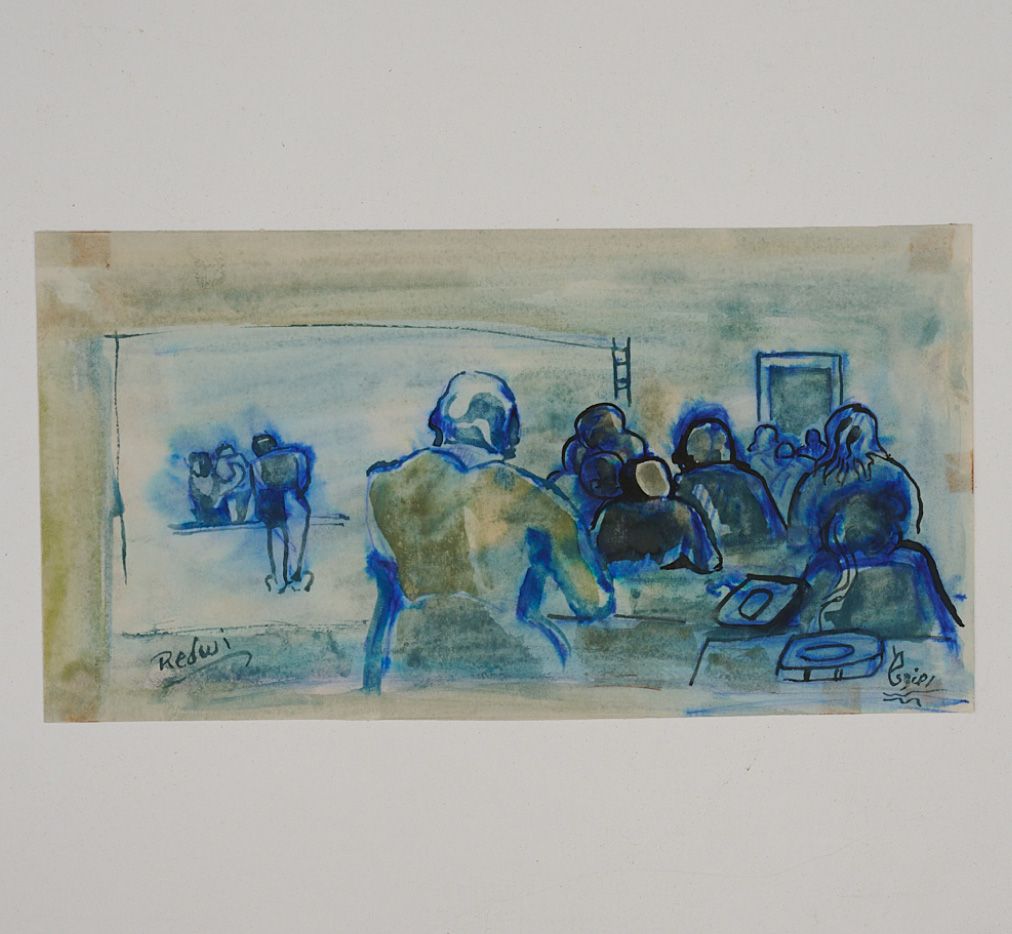
Abdulhalim Radwi. Untitled drawings. Courtesy the Estate of Abdulhalim Radwi
Making books has been developed into a major art form by Iraqi artists – Dia al-Azzawi, in particular, who over decades has made hundreds of books for which he uses the Arabic term dafatir, and many are inspired by poetry. He designs every aspect, from the cover to its interior contents; these are tactile beautiful objects and the ones he loaned for Amakin feature the poems of the Iraqi poet and close friend, Muzaffar al Nawab, famous for his style of writing, featuring the dialect of the populations of Southern Iraq. In the book illustrated here, text in Azzawi’s own hand encircles or lies alongside the drawings.
Sadik Kwaish Alfraji’s drawings The Tree I love at Abu Nuwas Street also evoke an Iraq that is lost to him - a street in Baghdad that he loved. Over 40 drawings using charcoal, ink and oil stick on Indian handmade paper, we see a succession of figures with a tree and about which he writes: ‘it is every tree that I sat under or sheltered in its shade, like all those who passed by. Every tree on that street is a living being that keeps the secrets of whoever leans on it. Under every tree there are countless stories of love, hope, hunger, fear, waiting and much more, that belong to the experience of our existence in the world.
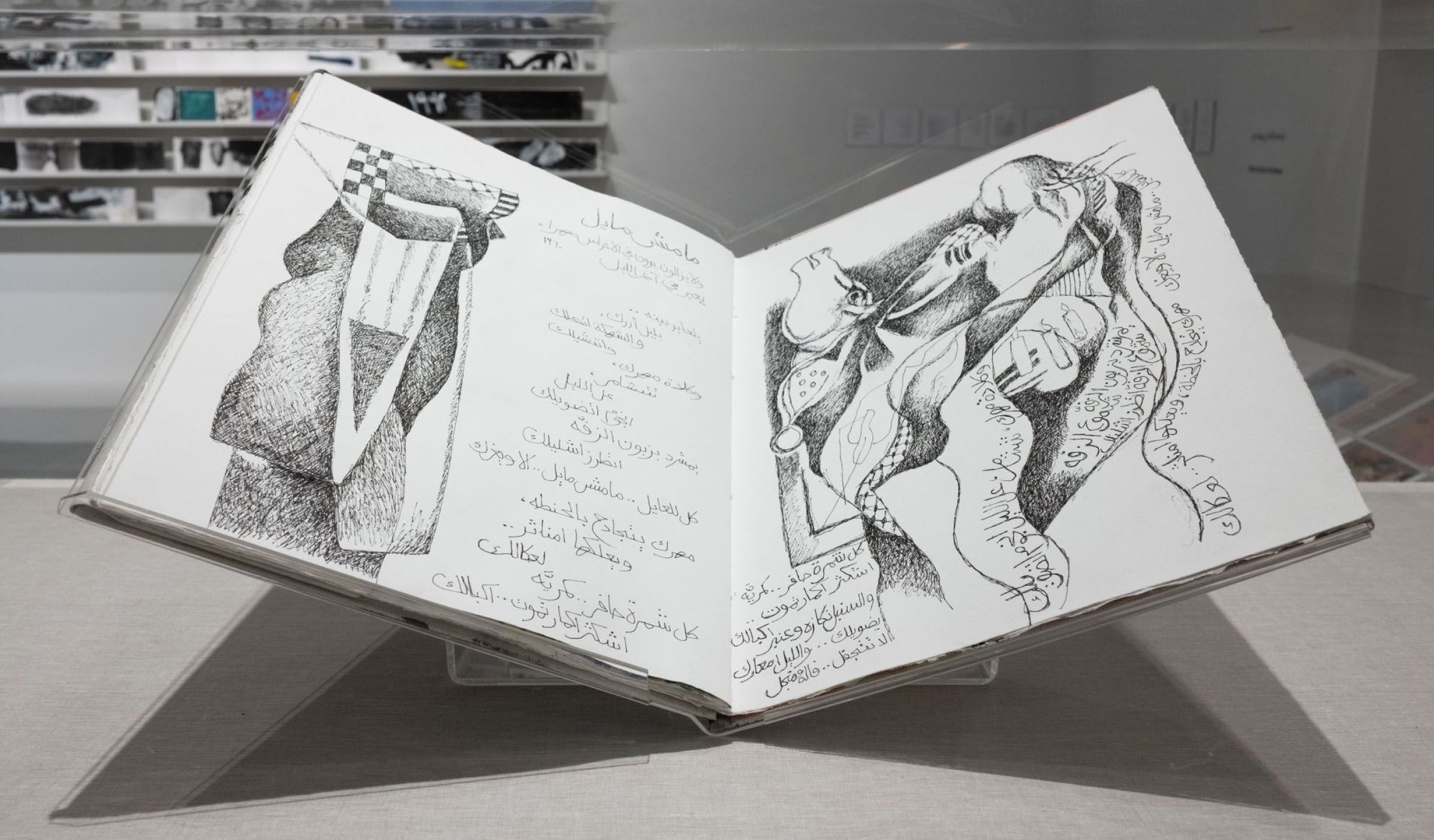
Dia al-Azzawi. Unique Daftar inspired by the poetry of Muzaffar al-Nawab No One Leans Over, and other poems, 2014. For the Railway and Hamad and other poems, 2000. Liar by Muzaffar al-Nawab, 2017. The large daftar with its cloth cover is open at the poem No One Leans Over which Azzawi has written in his own hand. Next to it is the smallest daftar that he has made to date. To the left, the daftar on which is inscribed the poem Liar, takes on a sculptural form. Courtesy of the Artist.
Badr Ali is also a passionate advocate of drawing. He describes what he draws as ‘not necessarily representational in the traditional sense, they are gestural, ethereal, esoteric –responding to sensations.’ Leading a peripatetic existence during the last years in which he traveled between cities: London, Florence, Jeddah amongst others, a notebook always in his rucksack, for Badr the fascination is not, he says ‘as a finished product, it’s not supposed to be a precious, perfect object – give me the smudges, all the crinkles, mess, the raw, rough lines – the journal I take around as I travel with rips, straight out of my backpack, versus something I work on meticulously – the final manifestation of my ideas.’
In the exhibition we show that transformation, piles of his drawings and notebooks in a case, the large scale unique prints floating on the wall above.
It was Manal AlDowayan in discussing the work of Safeya Binzagr who wrote: ‘The soul of an artwork is conceived in a sketchbook.’ For the visitors who encounter the drawings and sketches of the many artists in Amakin who work with paper, they feel they are entering a private world.
Written by Venetia Porter, who is the curator of ‘Amakin’ exhibition.
The ‘Amakin’ Exhibition started in SAC, Jeddah, and now can be visited at Ithra until 30th September 2022.
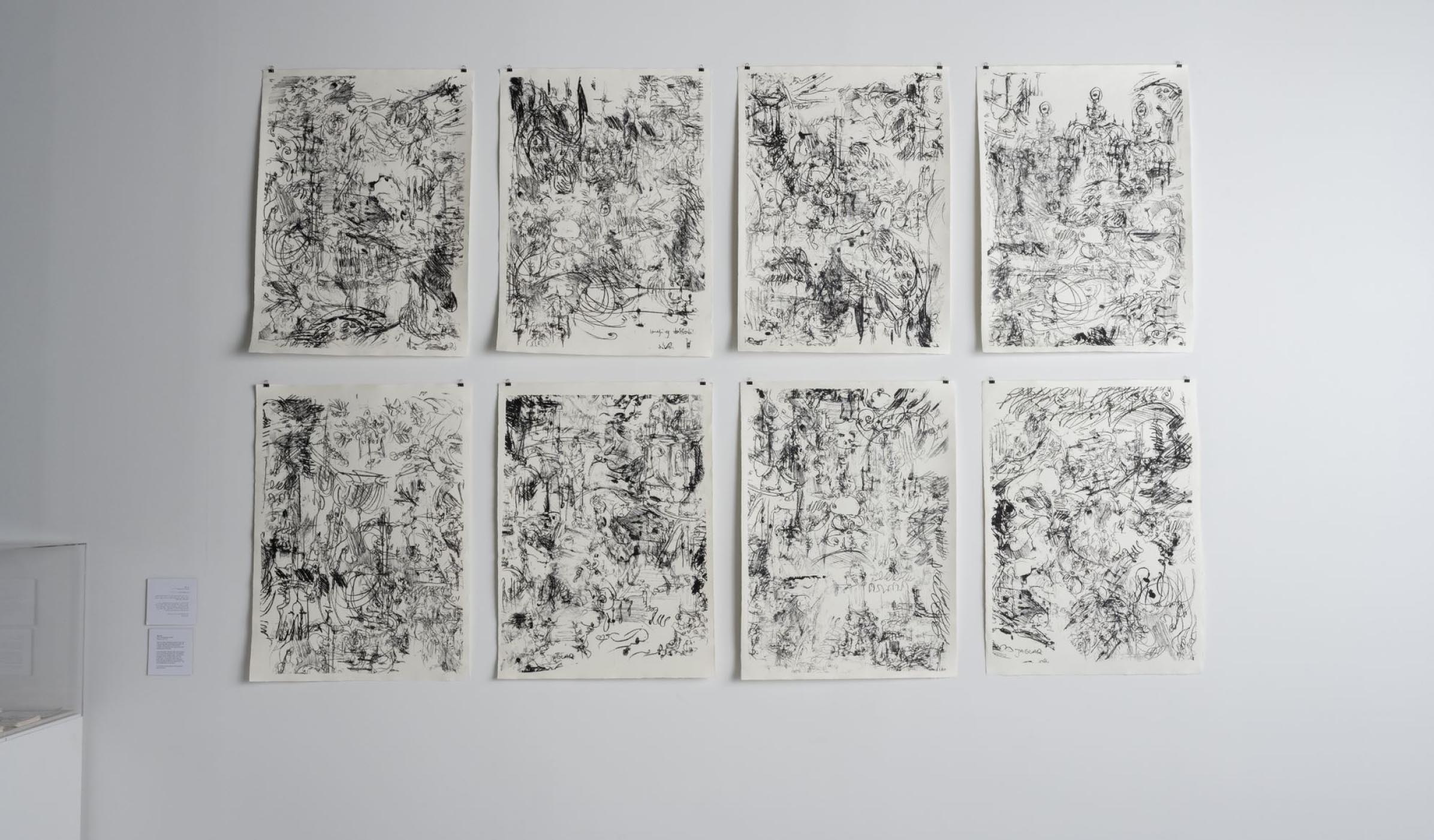
Badr Ali. Entropy, 2021-22. Acrylic paint screen printed on Hahnemuhler paper (unique). Commissioned by SAC for 21,39 Jeddah Arts (2022)
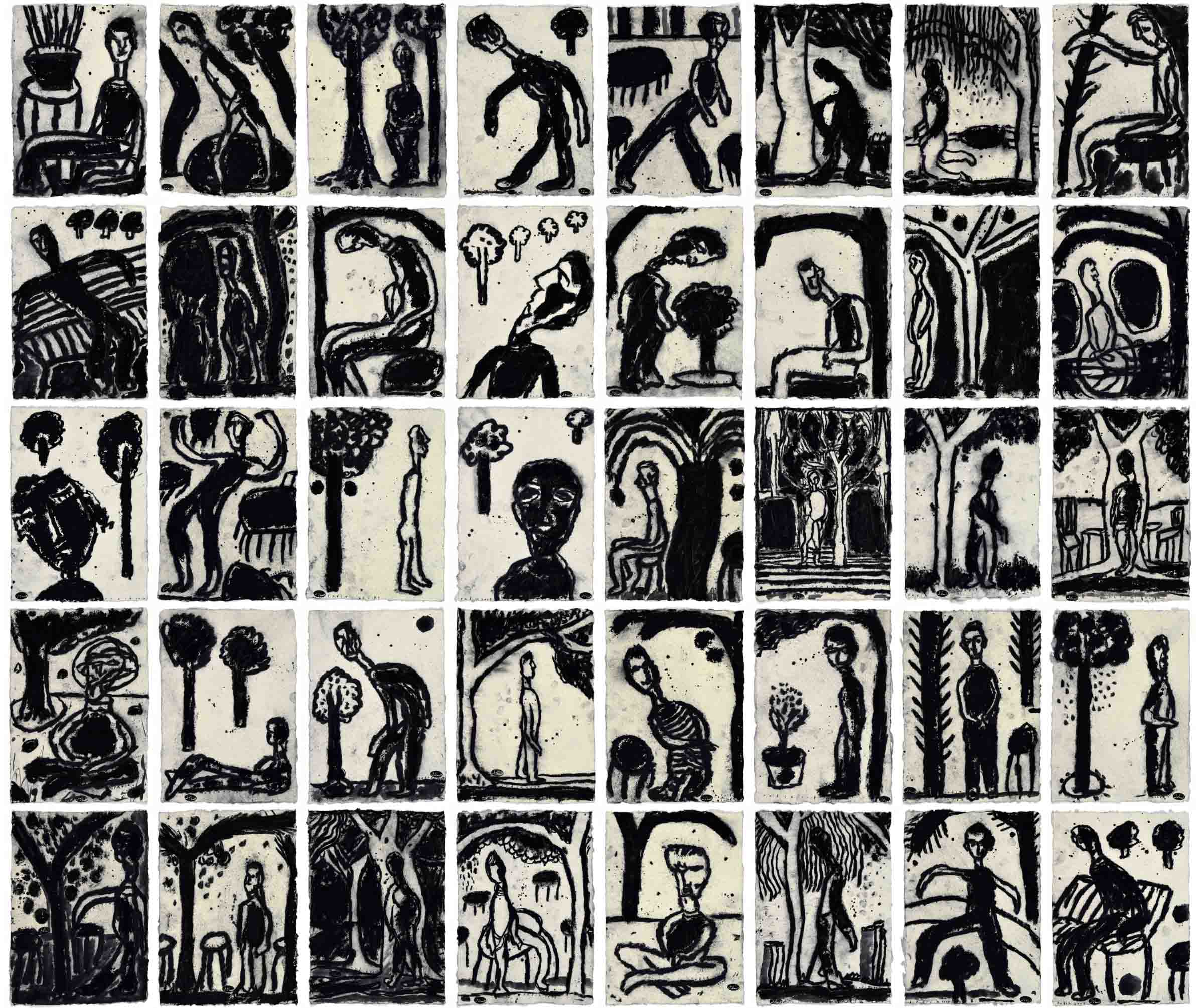
Sadik Kwaish Alfraji. The Tree I love at Abu Nuwas Street, 2017. Charcoal, ink and oil stick on Indian handmade paper 30 × 20 cm (each).
Private Collection
